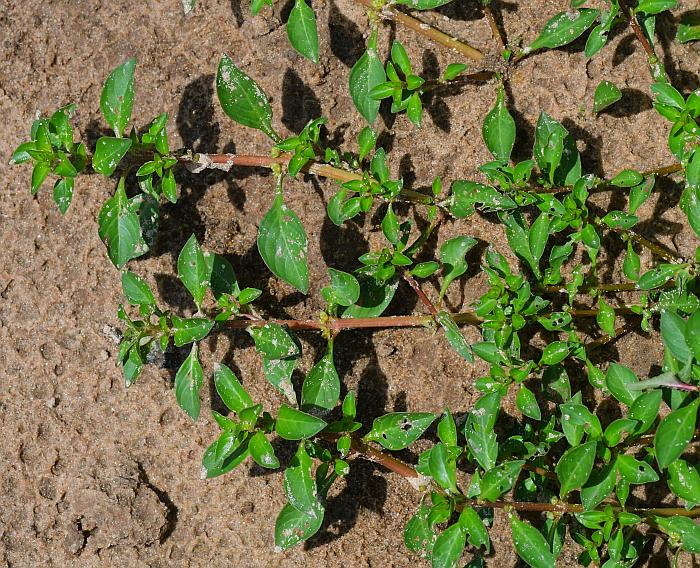Ludwigia palustris (L.) Elliott
Water Purslane

Native
CC = 4
CW = -5
MOC = 64
© SRTurner
Ludwigia palustris (L.) ElliottWater Purslane | |
 |
Native CC = 4 CW = -5 MOC = 64 |
© SRTurner |
|
Family - Onagraceae Habit - Perennial forb with fibrous roots. Stems - To 50 cm, usually prostrate and creeping, branched and mat-forming, sometimes with ascending tips, rooting at nodes, not spongy, glabrous.
Leaves - Opposite, petiolate. Petiole to 2.5 cm, narrowly winged. Stipules minute, 0.1-0.3 mm long, lanceolate to ovate-triangular, reddish purple, succulent. Blades 0.5-4.5 cm long, narrowly to broadly elliptic, tapered at base, angled or slightly short-tapered to a bluntly or sharply pointed tip, margins entire but short-hairy, glabrous. Venation pinnate, with lateral veins distally fused to marginal vein.
Inflorescences - Solitary axial flowers, the stalks absent or to 0.5 mm long at flowering and fruiting, the bractlets minute, linear to linear-lanceolate, not succulent, glabrous. Flowers - Sepals 4, 1.1-2.0 mm long, 1.0-2.1 mm wide, green, broadly lanceolate to broadly ovate-triangular, sharply pointed at the tip. Petals absent. Stamens 4, the filaments green, somewhat translucent; the anthers 0.2-0.4 mm long. Pistil 1, with 4-locular inferior ovary. Stigma capitate.
Fruits - Capsules 2-5 mm long, 1.4-3.0 mm wide, oblong to slightly obconic with an abruptly constricted base, slightly and bluntly 4-angled, with a longitudinal, green, central band on each face, thin walled, appearing glabrous (microscopically hairy), dehiscing irregularly and tardily by decay of the walls. Seeds 0.5-0.7 mm long, ellipsoid, free from the fruit tissue at maturity, the surface yellowish brown, shiny, with a fine network of ridges.
Flowering - May - September. Habitat - Streambanks, pond margins, fields, ditches; often emergent aquatics in shallow water, occasionally submerged aquatics. Origin - Native to the U.S. Lookalikes - None close. Other info. - This nondescript and easily overlooked species can be found throughout much of Missouri but is absent from most of the northern 1/4 of the state. It is also found throughout the eastern half of the continental U.S. and along much of the West Coast. The plant can be identified by its wet habitat, opposite leaves, and tiny greenish flowers. The top photo shows plants in full bloom. The absence of petals renders it relatively inconspicuous. Photographs taken near Angel Mounds, Evansville, IN., 8-5-06 (DETenaglia); also near Allenton Access, St. Louis County, MO, 8-2-2020; and at Otter Slough Conservation Area, Stoddard County, MO, 8-7-2022 (SRTurner). |